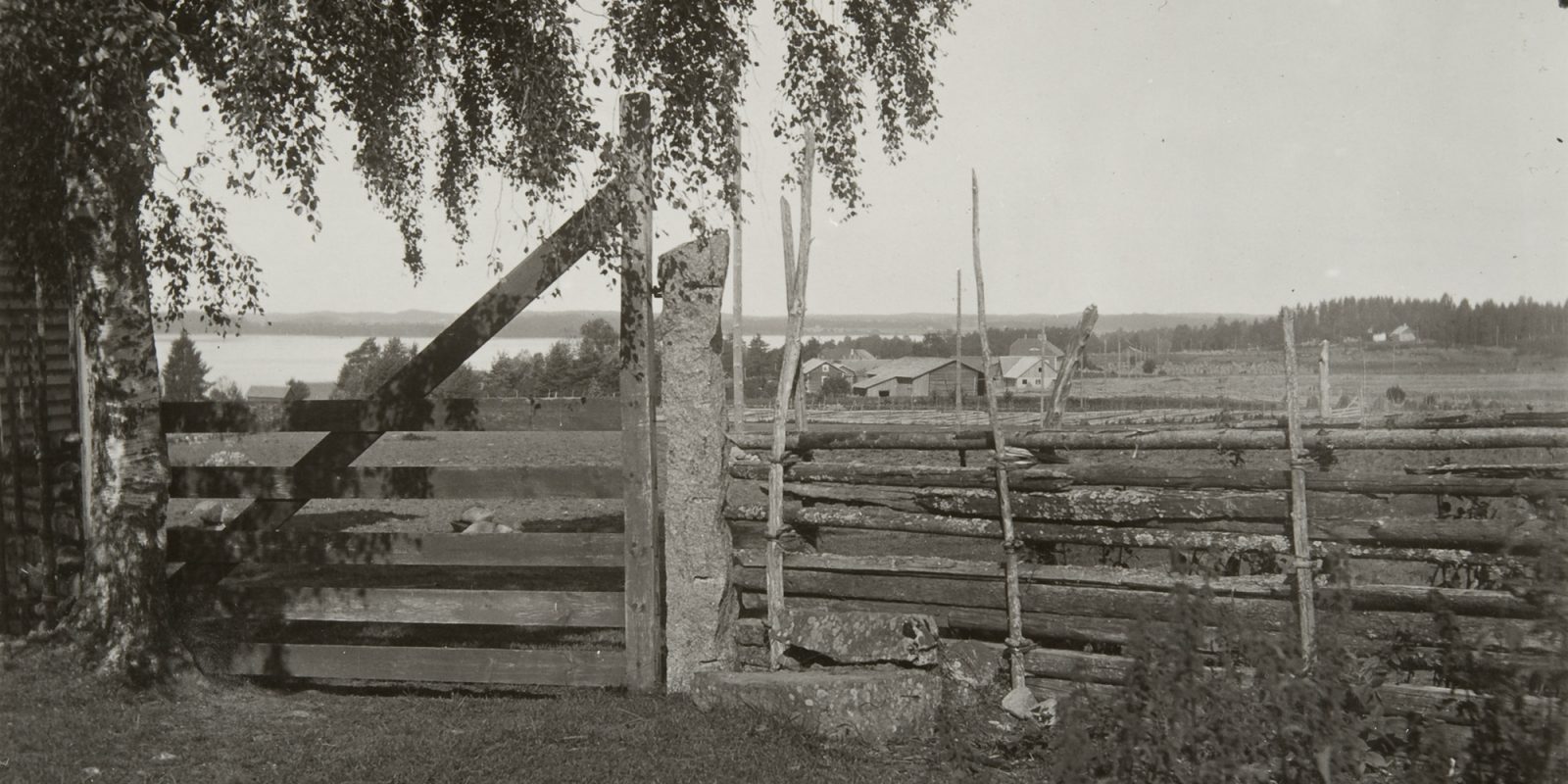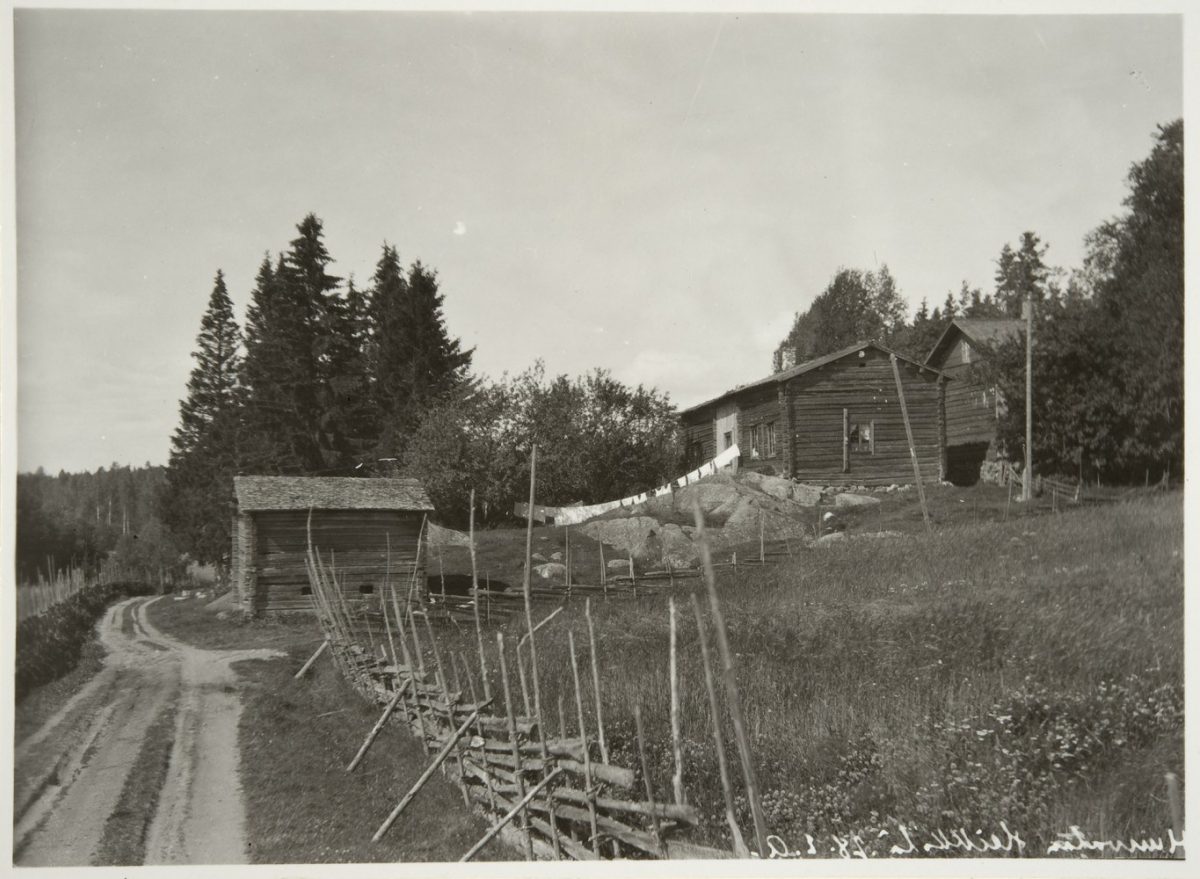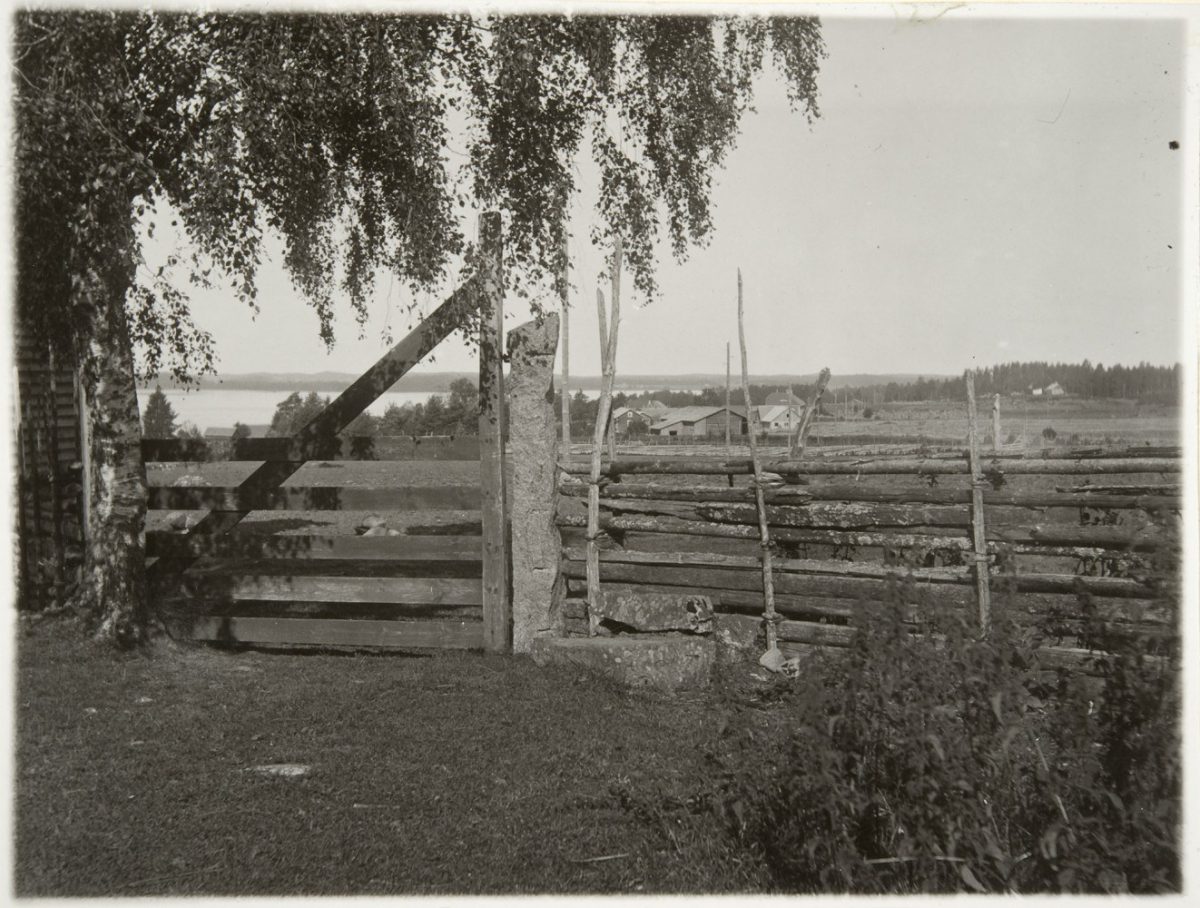
Local photos
Esko Aaltonen documented the villages and residents of the Suur-Tammela area.
“The vast open lake was blue, the hills and the fields, one after another, were bright green, and my eye fell on the scattered buildings that had more of an old patina than the linearity and colour of new buildings.”
This is how Professor Esko Aaltonen described the scenery in the village of Hykkilä in Tammela in 1965 in the Forssan Lehti newspaper he had founded earlier. He reminisced about his first meeting with the villagers in 1919 when he was on a summer holiday in Hykkilä with his family. At first, they only knew the young farmer and his wife from the Sipilä farmhouse, the lakeside cottage of which Aaltonen’s family was staying in. Soon, Aaltonen also made friends with the owner of the Jussila farmhouse and his brothers, and in a few years he bought a lakeside plot for a summer house from them.
Of the family’s eight children, the second-youngest, Esko Aaltonen, was born in 1893. The family lived in the Viksberg building owned by the Oy Forssa Ab factory. For a child of a factory worker, going to school was not guaranteed, and Esko Aaltonen was the only one of the children to complete the matriculation examination. As soon as he graduated, he applied to a university to study the history of Finland and Scandinavia.
Aaltonen was interested in his home region, the past and photography even when he was a young student at a co-educational school. The article ‘Place names, etc. in Tammela’ was his first writing that was printed. It was published in the Kotiseutu magazine in 1911. When studying at the university, Aaltonen contributed significantly to the folk poetry collection of the ‘Tavastia Nation.’
From his villa, which was constructed in the Jussila lakeside plot in Hykkilä, Tammela, in 1923, Aaltonen travelled in the local area and became familiar with all the villagers in Hykkilä and Lunkaa. He made notes of the houses’ history and the residents’ lives that arose in the conversations. He wrote his numerous articles based on these notes. At the turn of the 1920s and 1930s, he photographed a diverse series of the farm buildings, residents and working methods in the Suur-Tammela region.
Aaltonen stated that one’s home region is formed when scenery meets personal experience. He also emphasised the significance of the social atmosphere born out of the villagers working together. As an active member of the regional and museum association, Aaltonen aimed to make his home region known and promote community spirit.
In addition to all the activities, Hykkilä was also a place for rest and relaxation for Aaltonen. In a letter he wrote to his friend during the Second World War, he said: “I have spent a lovely week here in Hykkilä, by Lake Kuivajärvi, admiring the wood anemones, cuckoo calls and log rafts. I have been busy in the garden, I feel as if I were born again. My mind is responsive again, my head full of ideas. I expect much of this summer.”
You can find more photos by Esko Aaltonen on the website of the Picture Collections of the Finnish Heritage Agency: https://museovirasto.finna.fi.
Text: Saija Kainulainen
Kamera 4/2021

Heikkilä farmhouse in Huuvala, Tammela, in 1928. Photo: Esko Aaltonen / Ethnographic Picture Collection / Finnish Heritage Agency (KK1929:28)

The gate of Jussila farm in Hykkilä, Tammela, at the turn of the 1920s and 1930s. Photo: Esko Aaltonen / Ethnographic Picture Collection / Finnish Heritage Agency (KK1929:110)